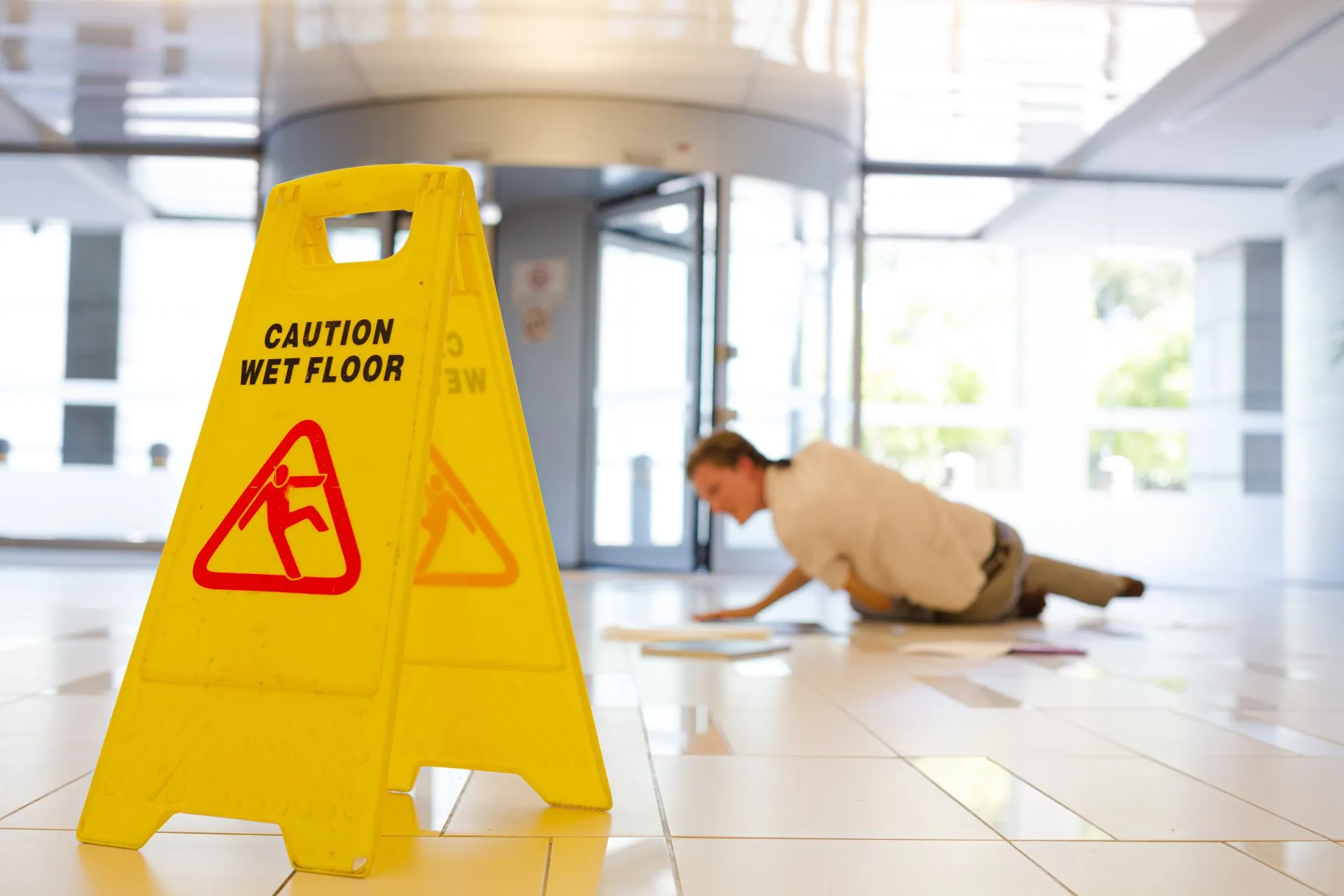
Providing documentation, like photographs or videos, that irrefutably shows you were injured by a hazard on someone else’s property is the best way to prove negligence in a slip and fall case.
Proving negligence isn’t always easy, especially if you don’t have much evidence to corroborate your version of events. Consult our reputable personal injury lawyers to find out if you have a case or to learn about your options for seeking compensation.
Elements of a Negligence Case
To prove negligence in a slip and fall case in Ohio, you have to prove four elements.
Duty
Proving duty involves establishing that a property or business owner owed you a duty of care. In the case of slip and fall injuries, a property owner has a legal responsibility to keep the property safe for legal visitors. The level of duty is assessed by the relationship between parties. Stores, for example, owe a high level of duty to ensure the safety of their customers.
Trespassers generally aren’t owed a duty of care, which is why a trespasser injured by a hazard might not be able to successfully win compensation in a slip and fall case.
Breach
A breach is when a property owner fails to uphold their duty of care. In the case of premises liability that means the premises was unsafe and they failed to correct the hazard or adequately warn visitors of the danger.
If there was a puddle in an aisle of a store, and the property owner knew about it, then they have arguably breached their duty to reasonably ensure your safety. The owner might take additional steps, like if they put out a wet floor sign, that might provide some liability cover despite the hazard.
Causation
The cause of your injury must be determined to be directly related to the breach of duty.
Damages
You will need to show proof of the damage that is directly related to your injury. Damages can be related to physical injuries or emotional trauma. You likely won’t be able to pursue a case if you have no provable damages. You might slip in a store due to negligence, but you can’t file a claim over your fall if you didn’t suffer any injuries or incur any monetary losses as a result.
Together, these elements create the foundation for proving negligence in a slip and fall case. They are important because they outline the responsibilities of both parties, which is key in determining fault.
Comparative Negligence Law in Ohio
When bringing your negligence claim, you may be met with the argument that you are at least partially responsible for your own injuries. Ohio’s comparative fault doctrine takes both the plaintiff’s and defendant’s fault into consideration.
Comparative negligence law is an assessment of each party’s culpability for the injuries and resulting damages. For example, if you slipped on a wet bathroom floor in a store, but likely wouldn’t have slipped had you not been checking yourself out in the mirror, you could be deemed partially responsible for your own injuries. Inattention of the injured person (e.g., looking at your phone when the fall happened) is one of the most common defenses used by Ohio property owners.
Comparative negligence is measured in percentages. If the total damages from slipping in the bathroom were $15,000 and you were deemed 20 percent at fault, your claim payout would be reduced to $12,000. The property owner would be liable for the $12,000 instead of the total amount.
In most cases, if the injured party is found to be more than 50 percent at fault, they cannot recover any damages.
Statute of Limitation for Filing Your Claim
In Ohio, you have two years from the accident date to file a claim. Connect with an experienced personal injury lawyer to determine if there are special circumstances that may extend the deadline for you.
Defenses Against Negligence Claims
In proving your case, you should be prepared for common defenses against negligence claims. The most common are comparative negligence and assumption of risk. Essentially, your own actions caused your injuries, or you were aware that injury was a possibility due to your participation in an activity or presence in a space.
Your claim may also be compromised simply because you don’t have the evidence necessary to prove your injury occurred on the property due to dangerous conditions. That’s why you should always report your injury to the property owner right away and take pictures of the hazard that injured you. Both an injury report and photo or video evidence will be vital in proving you were on the property when you were injured by a hazard that should not have been present.
The good news is you don’t have to go it alone. Our team at the Buckeye Law Group is prepared to support you while navigating your claim. We will work tirelessly on your behalf.
You Have a Right to Safety in Any Ohio Businesses or Property
Have you been injured in a slip and fall accident and need representation? Our Ohio personal injury attorneys are here for you. We understand it can be difficult to prove negligence in a slip and fall case. Our experienced team will investigate the situation thoroughly to uncover evidence that shows the property owner or business was responsible for your injuries and damages. Contact us today at 1-800-411-PAIN for free personal injury consultation.
When Doctors Miss the Warning Signs of Spinal Infections
Spinal infections are among the most dangerous and time-sensitive medical conditions a patient can face. When caught early, most can be treated successfully with antibiotics or minor surgical intervention. But
Legal Help for Victims of Delayed Epidural Abscess Diagnosis
An epidural abscess is a serious infection that forms in the space between the bones of the spine and the protective membranes surrounding the spinal cord. It is a medical
Your Rights After an Emergency Room Misdiagnosis
An emergency room misdiagnosis can turn a moment of hope into tragedy. Whether a heart attack is mistaken for indigestion or internal bleeding is missed entirely, ER misdiagnoses can lead
Common Emergency Room Errors and How to Prove Them
Emergency rooms are designed to handle life-threatening situations quickly and efficiently. But when overcrowding, fatigue, or lack of coordination lead to mistakes, the results can be devastating. From missed diagnoses
Was the Bus Properly Maintained? Mechanical Failure Claims
When Neglected Maintenance Leads to Tragedy Buses transport thousands of Ohio residents daily—students, commuters, and travelers alike. Passengers trust that these large vehicles are inspected, maintained, and safe to operate.
Private vs. Public Bus Accidents: What’s the Difference in Legal Process?
Understanding the Two Types of Bus Accident Claims When a bus accident happens, one of the first and most important legal questions is who owns and operates the bus. Whether
Your Legal Rights After a Botched Colonoscopy
When Medical Errors Lead to Serious Complications A colonoscopy is meant to diagnose and prevent disease, not cause new harm. But when performed incorrectly, this routine medical test can leave
Perforation After Colonoscopy: A Sign of Negligence?
When a Routine Procedure Turns Dangerous A colonoscopy is one of the most common diagnostic tools in modern medicine — a routine procedure performed thousands of times each day across
Ohio Highways and the Rise of Commercial Truck Crashes
Why Truck Accidents Are Becoming More Common — and More Dangerous Ohio’s highways — from I-71 and I-77 to I-80 and I-90 — serve as major arteries for commercial trucking
How Federal Regulations Impact Your Truck Accident Lawsuit
Understanding the Rules That Govern the Trucking Industry When a semi-truck causes a serious crash, most victims don’t realize that the trucking company’s liability extends far beyond the driver’s actions.
